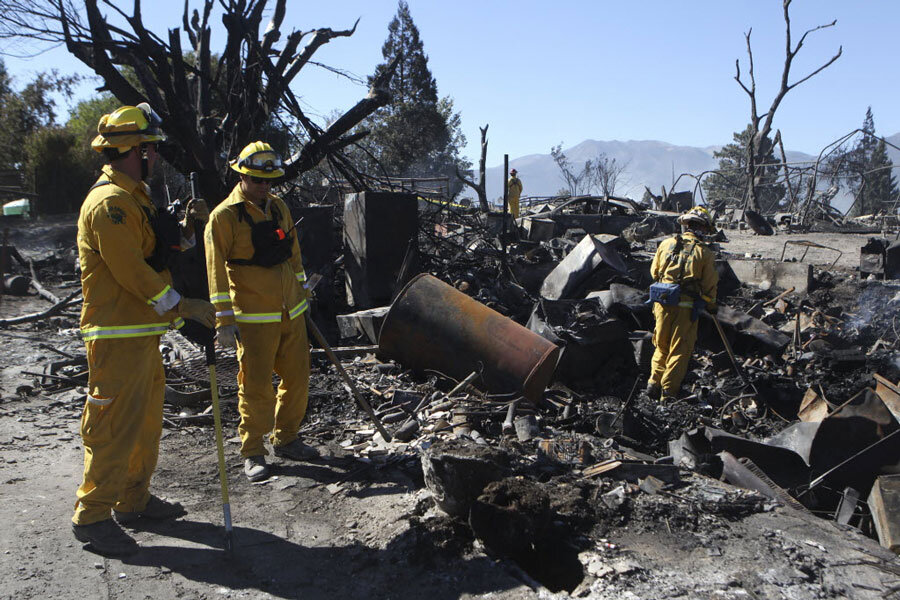California wildfires: Town of Weed snapshot of challenges facing firefighters
Loading...
| Los Angeles
California firefighters are struggling to contain what is on track to becoming a record year, with some 4,807 fires fought year-to-date – an increase of some 700 over this past year.
Even as they work to hold down the acreage consumed – more than 87,000 acres so far – the dryness brought on by three years of searing drought conditions are leading to even more damage to homes and other buildings than normal.
On Monday, the Boles Fire nearly wiped out the entire town of Weed, a historic logging community some 50 miles south of the Oregon border.
The town’s Catholic church burned to the ground and the lumber mill was devastated. Some 150 structures so far have either burned or been severely damaged. The Boles Fire is only 20 percent contained and is still burning.
“It’s very unusual for an entire community to be impacted so hard,” says Alyssa Smith, public information technician for Cal Fire, the agency charged with tracking firefighting across the state. “The fire in Weed definitely caught the firefighters off guard due to the high winds.”
The situation in Weed is a good snapshot of the growing challenges facing firefighters tackling not only the double devils of climate change and human intrusion into the wildlands, but decades of dry fuel that have built up in the wild areas.
Some 20 or 30 years ago, it was extremely unusual for entire communities to burn as Weed did, says Tim Quigley, a retired smoke jumper who lives in the northern California town of Redding.
But as the dry conditions have begun to reach historic proportions, with the state in its third year of drought, events such as the Oakland Hills fire – in which entire hillsides full of homes were razed – are not as rare, he says.
“The number of homes burning now is significantly higher than it was a while ago,” Mr. Quigley says.
As a first responder with more than 700 jumps under his belt, he says that the growing number of Americans who want to live in these areas are virtually guaranteeing that fires will destroy more structures as they burn. The drought is only exacerbating the problem, he says.
“It’s happening across the state,” he says.
Fuels such as underbrush and fallen trees are increasingly dry because of the lack of rainfall, he says.
High winds kick the problem into tragic relief, he notes, adding, “It’s an explosive situation right now.”
With the Boles Fire, the winds have gusted up to 40 mph, which has led to flames jumping ahead and throwing off embers that travel far afield. Mandatory evacuations are in place for much of the area, with 1,500 residents already displaced by the fire.
People who remain in the area are concerned about further damage to their homes and the remaining buildings in the town, says Suzi Brady, a Cal Fire public information officer on site in Weed.
As of mid-day Tuesday, 375 acres had burned, Ms. Brady says, “and the winds are still high and blowing.”







